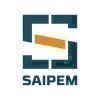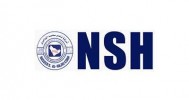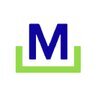Filter interviews by
Técnicas Reunidas Senior Tekla Modeler Interview Questions and Answers
Técnicas Reunidas Senior Tekla Modeler Interview Experiences
1 interview found
I applied via Job Portal and was interviewed before May 2023. There was 1 interview round.
(4 Questions)
- Q1. Basic detail of steel structures?
- Ans.
Steel structures are frameworks made of steel components, commonly used in construction for buildings, bridges, and other infrastructure projects.
Steel structures are composed of steel beams, columns, and connections.
They are designed to support loads and resist forces such as gravity, wind, and seismic activity.
Common examples include steel-framed buildings, bridges, industrial facilities, and stadiums.
- Q2. Process of Detail Design Modelling?
- Ans.
Detail design modelling involves creating detailed 3D models of structural components using Tekla software.
Start by importing architectural and structural drawings into Tekla software.
Create accurate 3D models of each structural component, including beams, columns, and connections.
Add necessary details such as bolts, welds, and plates to the model.
Ensure the model is accurate and clash-free by checking for conflicts wi...
- Q3. 2D DESIGN AND DETAILING
- Q4. Materials used for steel structures?
- Ans.
Materials commonly used for steel structures include carbon steel, stainless steel, and high-strength low-alloy steel.
Carbon steel is the most common type of steel used in construction due to its strength and affordability.
Stainless steel is often used for its corrosion resistance in environments where rust is a concern.
High-strength low-alloy steel is used for structures requiring higher strength and reduced weight.
Ot...
Interview Preparation Tips
Top trending discussions






Interview questions from similar companies

I applied via Recruitment Consultant and was interviewed in Jun 2021. There was 1 interview round.
Interview Questionnaire
1 Question
- Q1. Technical Quaetion related to IEC,IEEE, SIZING CALC
Interview Preparation Tips

(1 Question)
- Q1. About the butterfly valve and simulation
Interview Preparation Tips
At the time of interview, if someone is not comfortable in English ask him/her to express in Hindi

Interview Questionnaire
1 Question
- Q1. Hard core techanical

I applied via Naukri.com and was interviewed before Nov 2019. There was 1 interview round.
Interview Questionnaire
4 Questions
- Q1. Basics related to piperack design
- Q2. Design parameters for steel structure
- Ans.
Design parameters for steel structure
Load capacity and distribution
Material strength and durability
Environmental factors such as wind and seismic activity
Connection details and joint design
Fire resistance and protection measures
- Q3. Number of years exposure to staad
- Ans.
I have 5 years of exposure to STAAD software.
I have used STAAD for various structural analysis and design projects.
I am proficient in using STAAD for modeling, analysis, and design of steel and concrete structures.
I have experience in using STAAD for seismic analysis and design of structures.
I have also used STAAD for foundation design and analysis.
I keep myself updated with the latest versions and features of STAAD so
- Q4. Grating design and deflection limits
Interview Preparation Tips

I applied via Approached by Company and was interviewed in Feb 2023. There were 3 interview rounds.

(1 Question)
- Q1. 1. Diff. Type Flow Meter Concept 2. Temperature Compensation in thermocouple 3. SPI modules 4. Level Mesurment
(1 Question)
- Q1. Personal Questions about salary negotiation
Interview Preparation Tips

Senior Engineer Interview Questions & Answers
Oceaneering Internationalposted on 22 Feb 2022

(1 Question)
- Q1. Related to cad and design
Interview Preparation Tips

I applied via Walk-in and was interviewed before Sep 2022. There were 2 interview rounds.

(2 Questions)
- Q1. Which column takes more load short or Long Column
- Q2. What kind of pressures will impose on the water tank walls during seismic
Interview Preparation Tips

Interview Questionnaire
5 Questions
- Q1. Seismic design of building, criteria, type of checks in building with respect to seismic, analysis approach
- Q2. Pile and foundation detail, structural system in building, shear wall, dual system implications
- Q3. Steel structure- Class of section, connection detail, slender member design criteria
- Q4. Building irregularities type
- Q5. Nature of scope of work performed, understanding of coordination approach, software knowledge


(2 Questions)
- Q1. About the past projects, About the current projects Latest stack based
- Q2. Regarding involvement in a project.
(2 Questions)
- Q1. Basic question about the background
- Q2. CTC discussion, About the company, Team and culture.
Interview Preparation Tips
Técnicas Reunidas Interview FAQs
Tell us how to improve this page.
Técnicas Reunidas Interviews By Designations
- Técnicas Reunidas Piping Engineer Interview Questions
- Técnicas Reunidas Senior Design Engineer Interview Questions
- Técnicas Reunidas Rotating Equipment Engineer Interview Questions
- Técnicas Reunidas Senior Electrical Engineer Interview Questions
- Técnicas Reunidas Technical Lead Interview Questions
- Técnicas Reunidas Electrical Engineer Interview Questions
- Técnicas Reunidas Software Developer Interview Questions
- Técnicas Reunidas Instrument Engineer Interview Questions
- Show more
Interview Questions for Popular Designations
- Tekla Modeller Interview Questions
- Design Engineer Interview Questions
- Mechanical Engg. Design Interview Questions
- Senior Design Engineer Interview Questions
- R&D Engineer Interview Questions
- Structural Engineer Interview Questions
- Electrical Design Engineer Interview Questions
- Research and Development Interview Questions
- Show more
Técnicas Reunidas Senior Tekla Modeler Interview Process
based on 1 interview
Interview experience
Interview Questions from Similar Companies
|
Piping Designer
43
salaries
| ₹5 L/yr - ₹16.5 L/yr |
|
Process Engineer
38
salaries
| ₹5.2 L/yr - ₹17.5 L/yr |
|
Senior Designer
37
salaries
| ₹15.8 L/yr - ₹22 L/yr |
|
Instrument Engineer
33
salaries
| ₹6.8 L/yr - ₹20.2 L/yr |
|
Piping Stress Engineer
20
salaries
| ₹5 L/yr - ₹16.5 L/yr |

AECOM

AtkinsRealis

Saipem

Nasser S. Al Hajri Corporation
- Home >
- Interviews >
- Técnicas Reunidas Interview Questions >
- Técnicas Reunidas Senior Tekla Modeler Interview Questions











